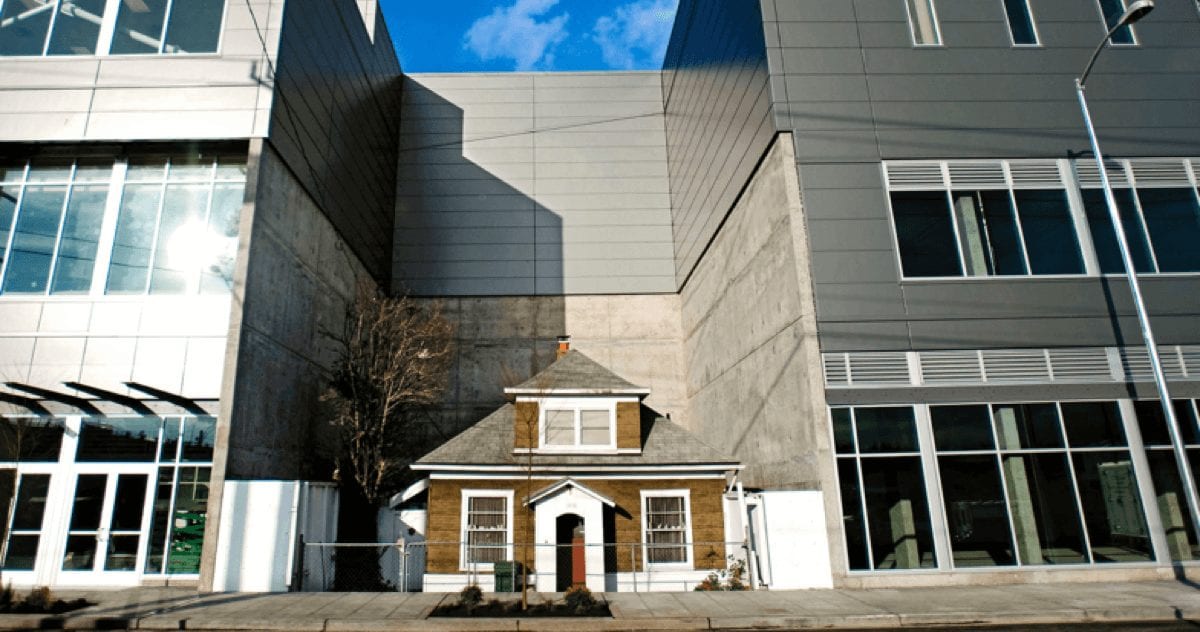
For the past several months, city officials have been working on a rewrite of Austin’s land-development code. The local media has nicknamed the project “Son of CodeNEXT” and “the next CodeNEXT,” and Community Not Commodity has long warned that City Hall may come up with something just as bad as last year’s failed effort.
We were proven right last Friday. That’s when the City of Austin released a 1,366-page proposal and map with sweeping changes for residential and commercial zoning throughout the community.
The plan is just as much of a threat to lower- and middle-class Austinites as CodeNEXT was, and it could do just as much damage to Austin’s established neighborhoods. Community Not Commodity is currently at work on a map showing the full impact of the city’s rezoning plan, and we will release it as soon as it’s ready.
Our researchers are continuing to dig through the city’s proposal in the meantime. Here are some preliminary findings:
The city’s new rezoning plan impacts nearly every homeowner in Austin, not just people living in “transition zones.”
Until now, most discussion of the city’s plan has focused on transition zones, areas of neighborhoods where local officials plan to forcibly rezone existing homes, incentivize their demolition, and allow the construction of large apartment and condominium developments. If that plan is approved, the entire city will be rezoned for greater density. Land developers will be incentivized to build a pair of new residences on any lot with a structure 30 years or older already on it. Up to six unrelated adults will be allowed to live in each of those three housing units, and developers will not be required to add any additional parking.
Those transition zones are bigger than city officials led the community to believe.
As expected, the most intense rezoning in the city’s plan occurs in transition zones. City officials previously claimed those transition zones would be limited to the five residential lots closest to certain corridors—but the plan released last Friday calls for much larger transition zones in many neighborhoods, with whole blocks of homes threatened by rezoning. In some neighborhoods, the plan calls for the rezoning of many city blocks and clusters of more than 100 homes.
Austinites won’t be allowed to build single-family homes in transition zones unless they’re replacing old ones.
If the city’s rezoning plan is approved, the “single-family home” designation will be removed from the “allowed uses” in transition zones (a list of the types of structures that are permitted in a given area). That means Austinites will be able to replace single-family homes in transition zones with new ones, but not build new ones. Going forward, the allowed uses will be limited to apartments, condominiums, townhouses, and other multi-unit buildings.
Many single-family homes may be replaced with buildings up to 45 feet tall, containing up to 10 units each.
The city has proposed rezoning homes inside transition zones using two levels of density: “RM1” and “R4.” A variety of denser housing types will be allowed on lots as small at 1,800 square feet in both of the two areas. In RM1 areas, buildings containing up to 10 housing units may be built upon a 5,000 square-foot lot. In R4 areas, buildings with eight units will be allowed on 5,000 square-foot lots, and up to 16 units will be allowed on a subdivided, 10,000 square-foot lot. The new structures may be up to 45 feet tall, overshadowing existing homes.
The population of many neighborhoods will jump, but with no added parking.
City officials are eager to move tens of thousands of new residents into Austin’s neighborhoods, but there’s no plan in place for their cars. In many cases, land developers will not be required to provide parking spaces for the residents of the multi-unit buildings slated for transition zones—and if some parking spaces are mandated, the city’s plan sets the standard at half or less of what would otherwise be required.
The city is moving forward too quickly with the plan, just as it did with CodeNEXT. Even though it’s 1,366 pages long and impacts most of the city’s homeowners, the Planning Commission will hold only one hearing on the plan, on October 26th at City Hall. The city council wants to vote on the matter not long after, on December 12th.
That deadline is arbitrary, unrealistic, and unfair. CodeNEXT went up in flames because city officials failed to get the community involved, and it looks like they’re repeating the same mistake.
Community Not Commodity will continue to review the City of Austin’s rezoning plan and report on new findings as they’re made. In the meantime, contact Mayor Steve Adler and your representative on the city council and tell them to cancel the December 12th vote! (Check this map if you aren’t sure which council member represents you.) Austinites need more time to review this matter and weigh its impact on their homes, neighborhoods, and families.
Together we can build an Austin for everyone!
Mayor Steve Adler:
steve.adler@austintexas.gov | 512-978-2100
Natasha Harper-Madison (District 1):
natasha.madison@austintexas.gov | 512-978-2101
Delia Garza (District 2):
delia.garza@austintexas.gov | 512-978-2102
Sabino Renteria (District 3):
sabino.renteria@austintexas.gov | 512-978-2103
Greg Casar (District 4):
gregorio.casar@austintexas.gov | 512-978-2104
Ann Kitchen (District 5):
ann.kitchen@austintexas.gov | 512-978-2105
Jimmy Flannigan (District 6):
jimmy.flannigan@austintexas.gov | 512-978-2106
Leslie Pool (District 7):
leslie.pool@austintexas.gov | 512-978-2107
Paige Ellis (District 8):
paige.ellis@austintexas.gov | 512-978-2108
Kathie Tovo (District 9):
kathie.tovo@austintexas.gov | 512-978-2109
Alison Alter (District 10):
alison.alter@austintexas.gov | 512-978-2110